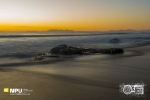

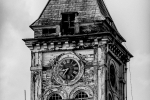
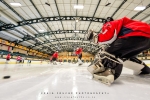
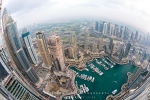

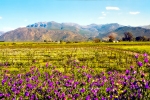





Travel photography is a subcategory of photography involving the documentation of an area’s landscape, people, cultures, customs and history. The Photographic Society of America defines a travel photo as an image that expresses the feeling of a time and place, portrays a land, its people, or a culture in its natural state, and has no geographical limitations.
Travel photography can either be created by professionals or amateurs. Examples of professional travel photography can be found in the National Geographic magazine. Travel photography is often shared through sites like Flickr, Facebook or travel photography websites such as TrekEarth.
Travel photography, unlike other genres like fashion, product, or food photography, is still an underestimated and relatively less monetized genre, though the challenges faced by travel photographers are lot greater than some of the genres where the light and other shooting conditions may be controllable.
This genre of photography entails shooting a wide variety of subjects under varied available conditions, e.g. low light photography indoors, available ambient light photography for exteriors of buildings and monuments, shooting on the streets where sometimes conditions may be hostile, capturing moments which rarely recur, capturing the magic of light while shooting landscapes, etc. It is not a “happy-snappy” holiday genre, the idea behind travel photography, it to attract the masses to view the destination you are at.
Some guidelines for good travel photography are:
The best light to capture most kinds of subjects is in the golden hours- one hour after sunrise and one hour before sunset (depends off course on where you are on the globe). So get up early to get those amazing photo opportunities, while all the other tourists are still asleep.
Don’t leave it to chance and learn as much as you can about the place you are about to travel. The more you know, the more “intelligent” your images will be.
Don’t waste your expensive traveling time on learning how to operate that new camera, lens or flash. Do your homework at home.
Staying in the center of town, or having a room with wonderful views can create a lot of great photo opportunities.
Learn how to say “Hello” in the local Language, and greet the locals when taking their photo.
Watch the portfolio of other photographers in order to get new ideas and get inspiration. If you perceive yourself as an artist, you must acknowledge the work of other artists. Do not underestimate inspiration: visit art galleries, attend some photography lectures, listen to classical music, read good books.
Photography is not only about visual inspiration. Try the local food, smell local markets and hear local music, feel the soul of the city, this will help you to better understand the story of the place. I learnt this valuable lesson in Split, Croatia.
Talk to locals and seek their advice on great photo opportunities in their own country.
Don’t take your entire house with you. When I travel I take up to four lenses with me : two zooms, one prime lens and one fisheye or shift-tilt lens. This is extremely important tip if you plan to do some hiking or trekking.
Yes I know that in Cuba they smoke cigars and that in Thailand they have monks. Tell your viewers something fresh and new. Share your own point of view of the place.
Don’t try to see everything on your limited time. It is much smarter to get a better understanding about each place you visit on your journey. Slow things down, and your images will get better.
If time allows you, always choose to travel by train or bus over flying. As it will allow you to have better interactions with the locals.
Don’t spend your entire trip looking through the lens. Enjoy your time just traveling and enjoying the ride.
One of the most important and influential photographers of all time, Henri Cartier Bresson, never ever used flash in his photography. A practice he saw as “impolite…like going to a concert with a pistol in your hand.” Try to learn how to use and enjoy the benefits of natural light before you buy that expensive flash or reflector.
Every good travel photo series must have at least one bird’s eye view of the place (Being referred sometimes as the “establish shot”). Find yourself a vantage point overlooking the entire city or town.
“Well, if I had an expensive camera and lenses like you have” or “If someone would pay me to travel”, or “but, you have so much time on each destination”.
All of those, are excuses we hear too often. Excuses they tell themselves to answer the question of “Why can’t I get Strong images?” Some photographers had their first newspaper published cover image, taken using a pocket camera.
Yes, equipment is important and it certainly makes life easier. But don’t forget the camera is just an instrument. A “pipe” which captures your vision and thoughts. Do not cry over the equipment you don’t own. Spend the time and money to learn photography, reading books about it and travel as much as you can.
Other photographers for their first 8 journeys, might never got paid. It is hard work, and then one can spend money on traveling and building a portfolio, until the right agency came along. It’s not impossible to sleep in some sleazy places and to get bus rides from hell. This lifestyle requires commitment. The lengths may be one to two weeks per assignment. Two weeks to come back with an amazing results. Not excuses like “but it was raining and I was sick” are accepted.
The best way to learn (anything) is by watching a master working on his craft. Try to find a photographer whom you can accompany as his assistant. It is true that most travel photographers like to travel alone. But it doesn’t have to be a travel photographer. Most of my knowledge, I learned from other photographers, the internet and books.
No matter where you live in the world: New York, Cape Town or a small village in France. Try to see the beauty of the place you live in. If you will find the beauty of that place and bring within your images, people will follow.
A good travel photographer must keep is portfolio alive. Keep on traveling, and as the last tip mentioned: you don’t have to travel to far and exotic places to do so. As it is very easy to travel to India and get “good” travel photography. Try to bring the beauty of your own local town. Travel to the nearest market or attend the next festival as a way to keep your craft improving.
Treat your subject as well as you can. Don’t shoot people from a far distance, don’t shoot people who don’t want to get snapped. If you promise to send their photos, please do so. This will ensure that the photographer that will come after you will be received with a smile. And don’t forget, sometimes it is best to just leave the camera behind and enjoy the ride.
My fellow photography friend Jon Reid is a travel photographer and has this to say in a blog regarding travel photography.
Click on the images below to view an enlarged single image.
All my images are available for purchase as prints. Digital images can be used under license agreement. Should you wish to purchase or license my images, please click here for more information, so I can assist you with your needs.
There are no upcoming events.